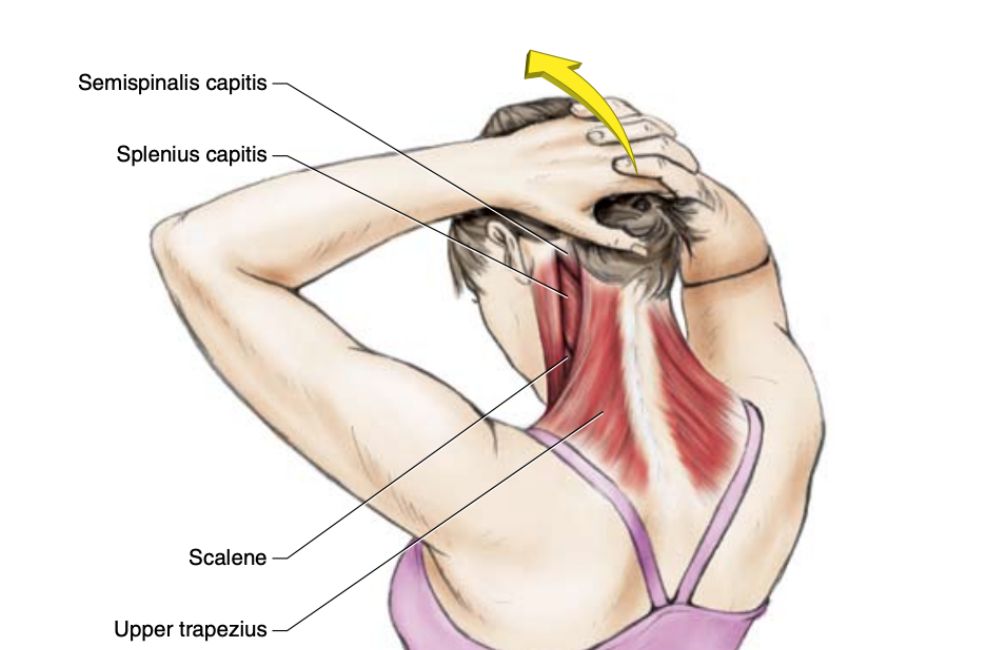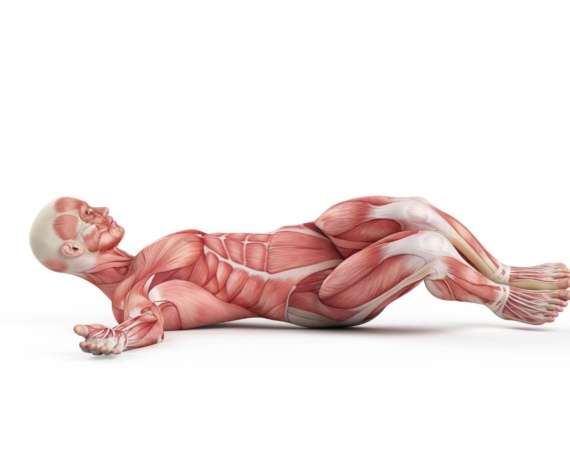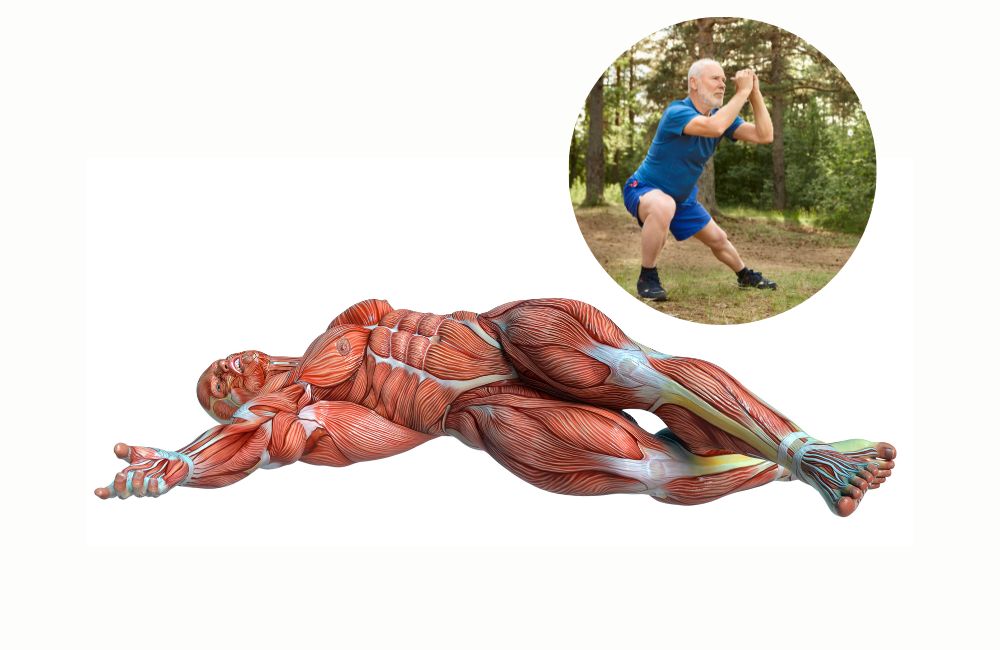
Mobility and flexibility are essential components of a healthy body as we age. Having good mobility and flexibility allows our bodies to move more freely without pain.
Do these mobility exercises to gain access to the full range of motion and improve daily functioning.
If you are like most people, mobility isn’t at the forefront of your fitness regimens and workout goals.
But if you’ve been experiencing discomfort in your back, hips, and joint pains, it’s essential to prioritize mobility in your regimens.
Mobility exercises are moves that help improve your flexibility and range of motion. They also help relieve tension in joints and decrease pain and stiffness.
In many aspects, they keep you active, injury-free and help improve your daily functioning.
Mobility is also one thing you can lose if you don’t use it. Adding mobility regularly moves to your workouts is a great way to slow down aging and stay independent and mobile as you age.
Here are the 7 best mobility exercises you can start today to improve your range of motion.
7 Best Mobility and Flexibility Exercises to Improve Your Range of Motion
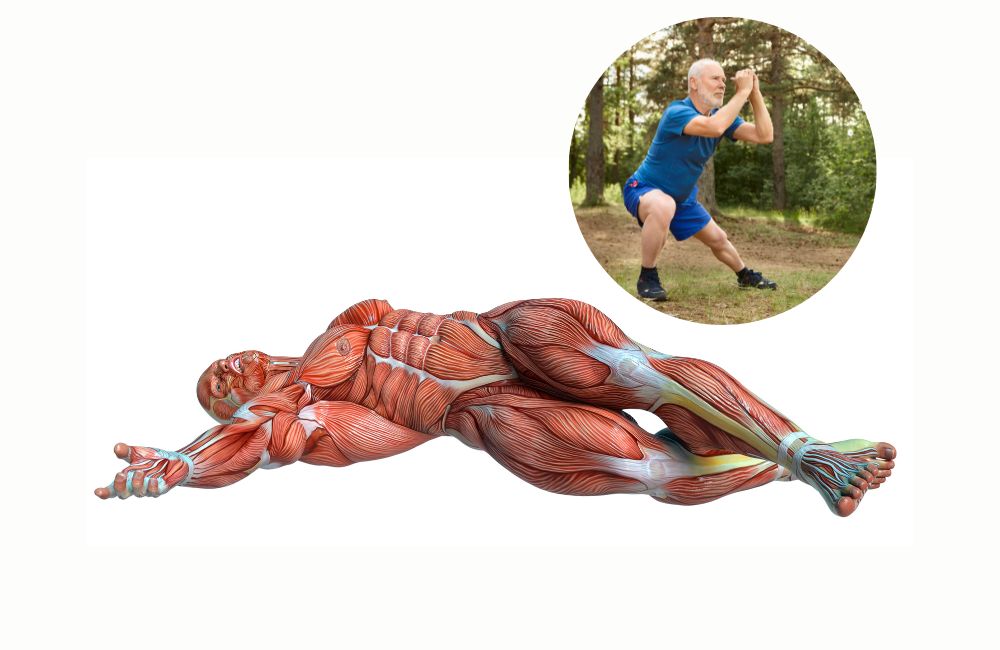
1. Deep Squats
Deep squat helps improve the range of motion in your hips and knees. It’s a great exercise to help you keep your hips, knees, and lower back healthy.
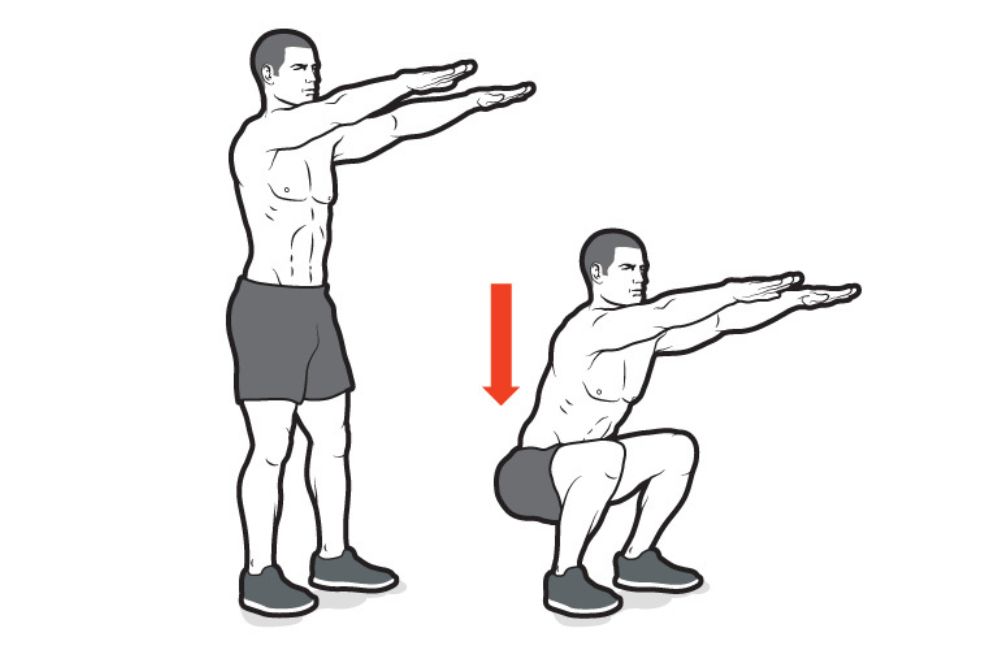
- Stand with your feet about hip-width apart.
- Your feet can be pointed forward or slightly out to the sides.
- Next, bend your knees as you lower your buttocks toward the ground.
- If possible, try to keep your heels on the ground. This may be difficult for you at first, but keep working on it!
- Once you lower down as far as you can, attempt to hold this bottom position for 30 seconds. Eventually, you’ll want to try to increase your time to minutes (or even hours, if you’re really committed!).
- After you’ve got a good hold in the deep squat position, push yourself back up into standing.
2. Lunge Position Hip Flexor Stretch
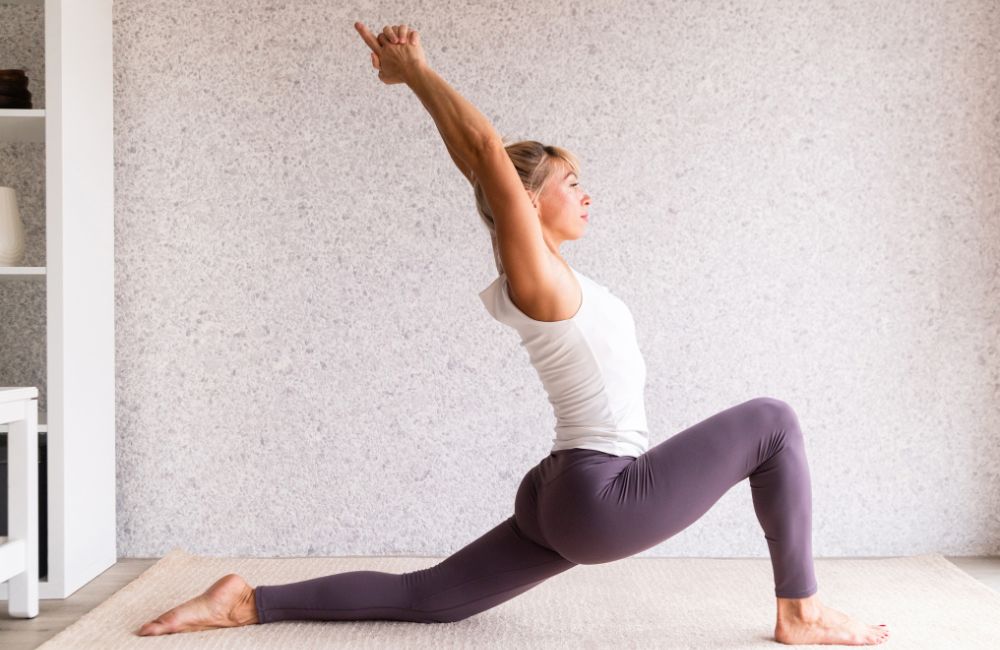
Previously, we described a few lunge movements designed to increase isometric strength and mobility in the hips. This move is focused, almost exclusively, on increasing flexibility in the hip flexor region.
How to Perform
- Place your right knee on the ground, with your left foot about 2-3 feet in front of the said knee.
- Next, lean forward, keeping your back straight.
- You should feel a deep stretch in your right hip flexors.
- Hold for 30 seconds and repeat 4 times on each side, 3-5 times per week.
3. Bridges
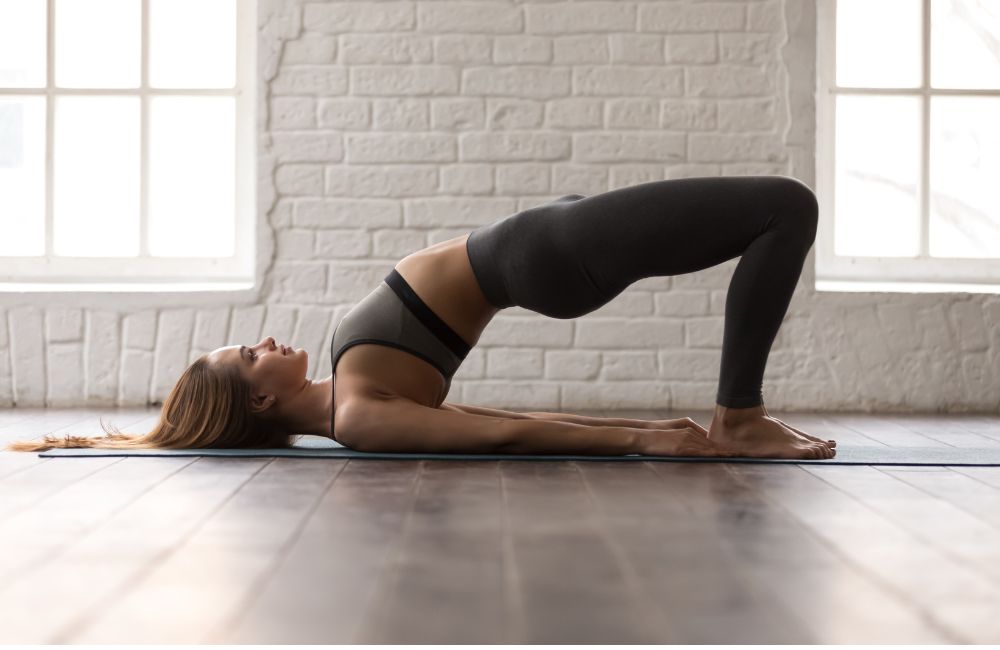
Bridges are one of the best exercises in existence. They strengthen the glutes, hamstrings, and various core muscles, while also stretching out different leg muscles. Best of all, it’s performed while lying down!
How to Perform
- Start by lying on your back with your knees bent and your feet flat on the floor.
- Next, press your feet into the floor and lift your hips up toward the ceiling.
- Hold this position for 10 seconds and repeat 10 times, for 3 sets, 3-5 times per week.
4. Child’s Pose
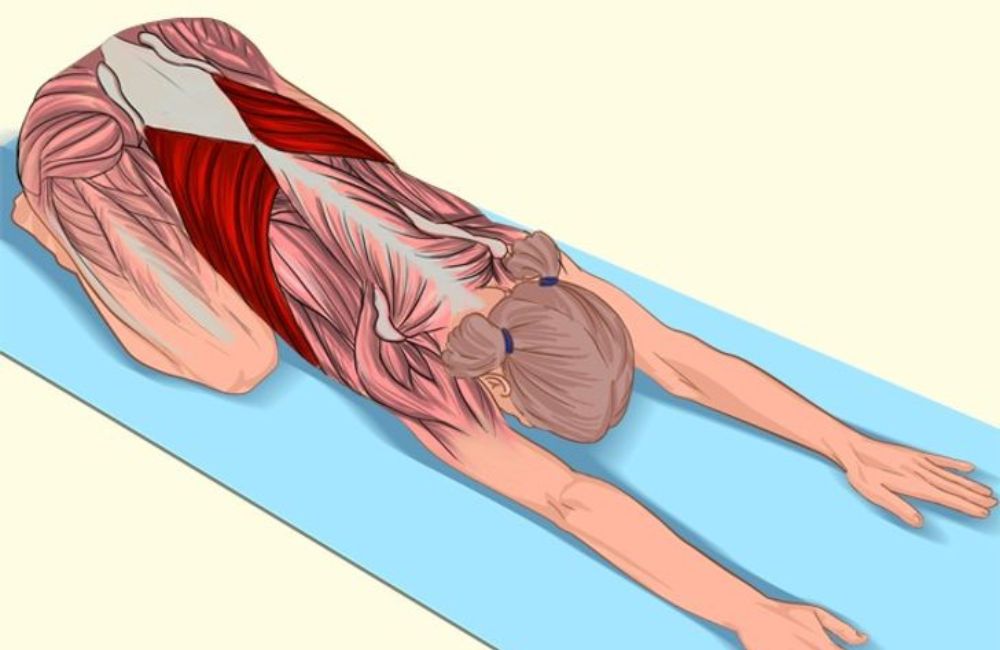
The child’s pose is one of the most important yoga postures for beginning students. A yoga instructor will often suggest using it as a resting pose if you need a break during an intense class. Balasana is a grounding posture that provides a gentle stretch for the back and hips. It helps calm the nervous system, reduces stress and fatigue, and relieves lower back pain.
How to do it:
- Start in a kneeling position. Bring your big toes together and widen your knees.
- Walk your hands forward, lowering your torso to rest between your thighs. Feel your forehead and your shins connected to the ground below you.
- Sink your hips back towards your heels as your arms extend forward, creating length throughout your back body.
- If you experience any discomfort in your shoulder, try a variation with your arms resting down by your sides instead. Stay in the Child’s pose for as many breaths as you want or need.
6. Angular Child’s Pose
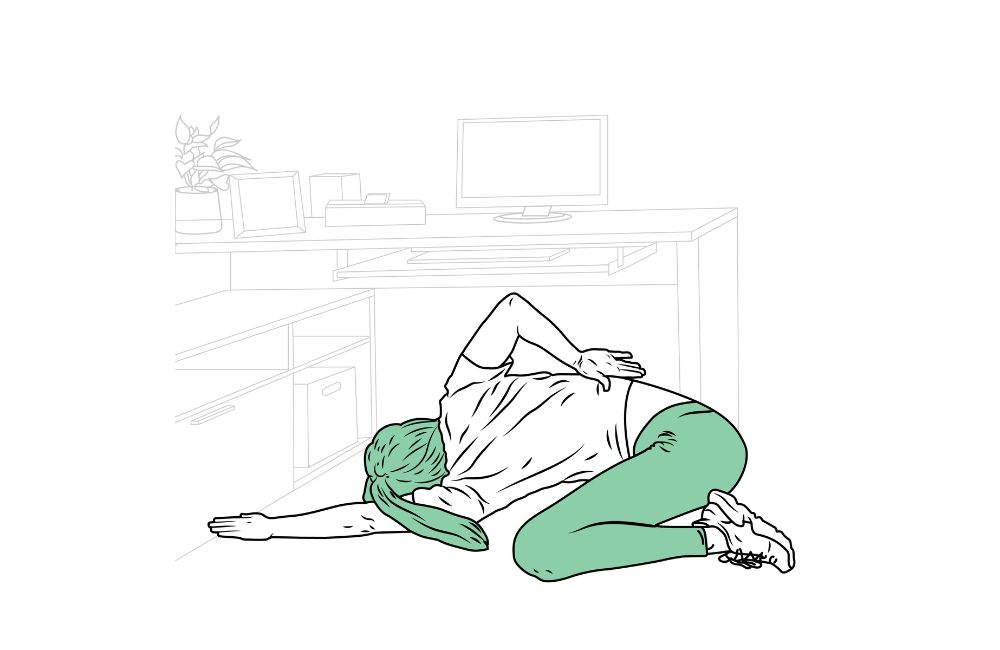
This modification of child’s pose is a great choice for people with stiff backs. By adding a slight rotational component to this movement, you can really take this stretch to another level.
How to Perform
- Start on your hands and knees, with your knees below your hips and your hands below your shoulders.
- Then, reach your left hand forward and slightly to the right as you simultaneously sit back on your heels.
- You should feel a stretch in your left lats and low back area.
- Hold this position for 30 seconds and repeat 4 times on each side per session.
7. The Mckenzie Prone Press Up
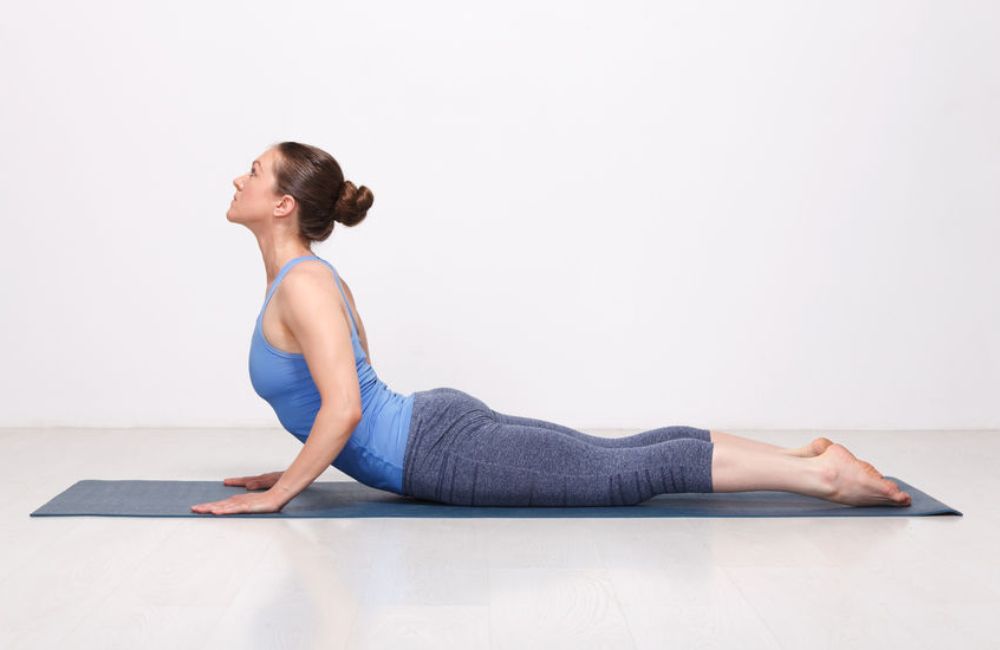
To correctly perform a prone press-up, follow the steps listed below:
- Start by lying on your stomach for at least 1 minute.
- If you do not have any pain in this position, prop yourself up on your elbows.
- If this position causes you no further discomfort after another minute, attempt to place your hands on the floor and press yourself up into further extension.
- During this stretch, your hips should remain on the ground and your spine should bend backward.
- Hold the stretch for 1-2 seconds, ensuring that you are taking deep, even breaths and that you are not experiencing any pain.
- Return to lying flat on the floor after 1-2 and repeat the stretch 10 times per session, 3-5 days a week.

